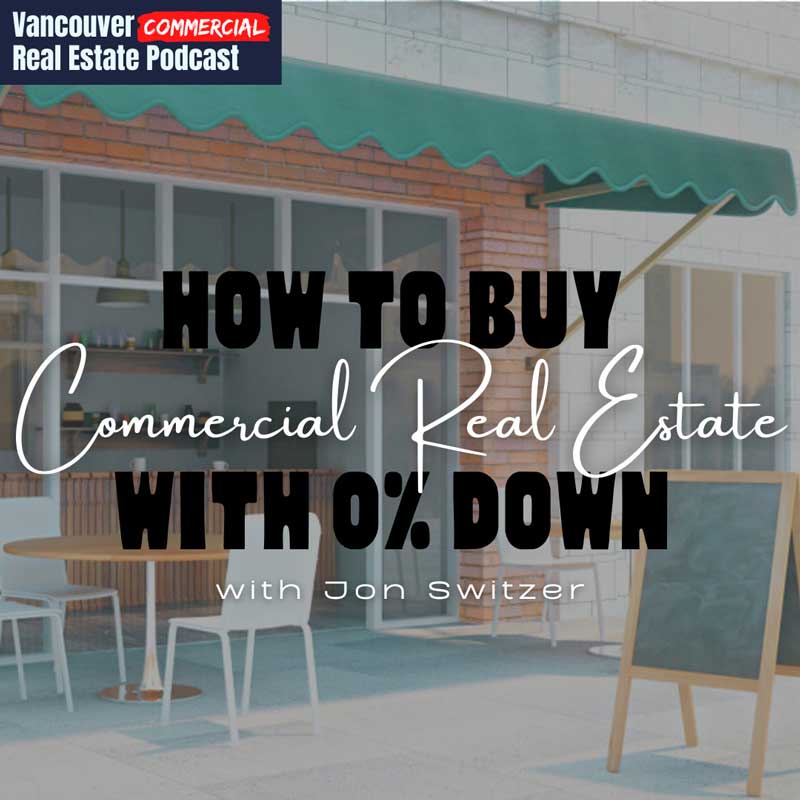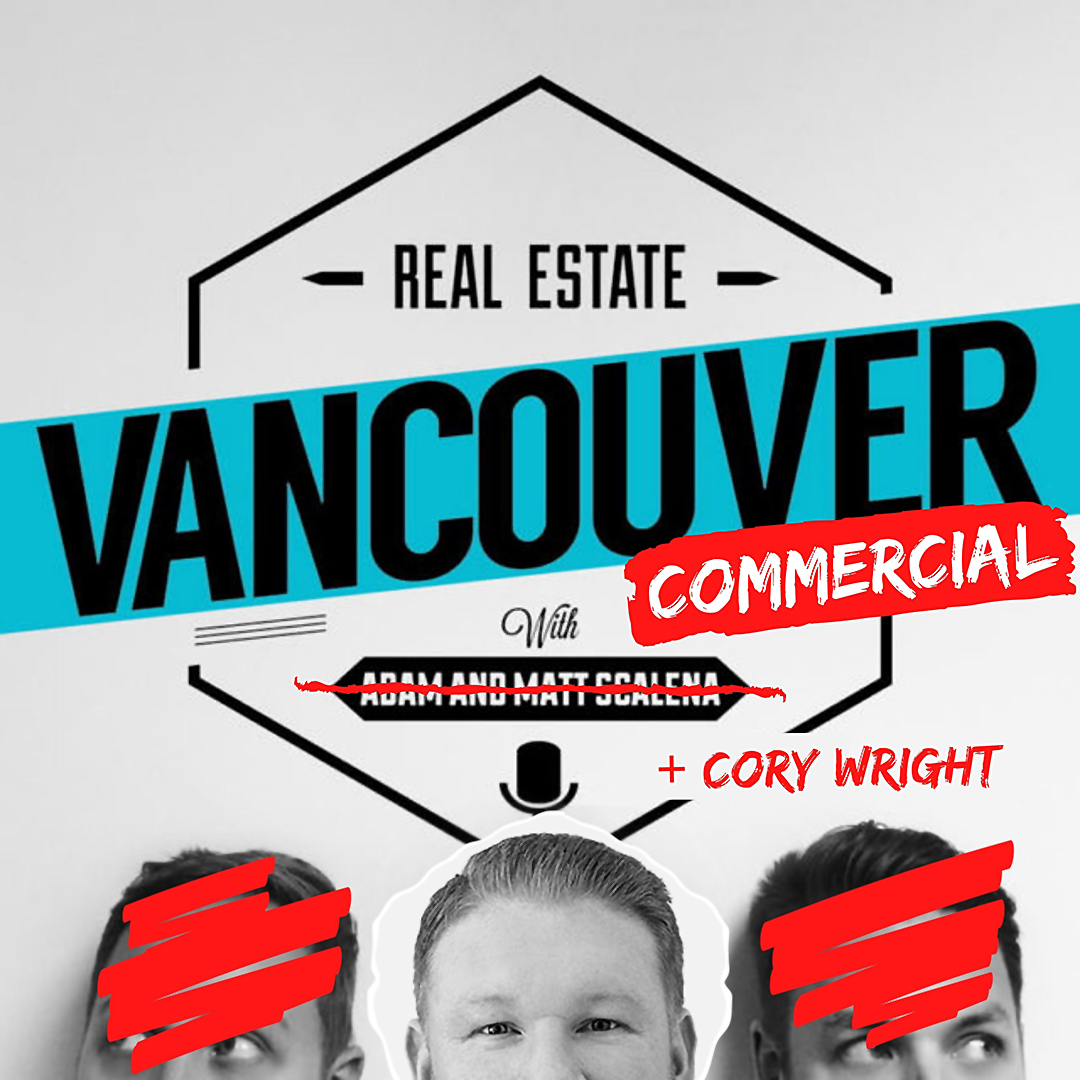
Powered by RedCircle
Are you a successful business owner? Or maybe a business owner who has been able to provide a living for your family but hasn’t yet found financial freedom through your business?
This week, Cory and Matt welcome Impact Commercial’s Jon Switzer, an owner occupier financial specialist, who shows business owners how to unlock their revenues, enabling them to become their own landlord, and in some cases, with as little as 0% down including closing costs. Most businesses in Canada are small businesses—50 employees or less—and you would be surprised to hear how a lot of these businesses have the financial ability to buy their real estate vs. leasing it. Jon highlights how banks view your business, the do’s and don’ts when you’re looking to purchase real estate for your business, and simple mistakes business owners make that could cost you an opportunity to become your own landlord.
This is a must-listen episode for all business owners or those aspiring to be business owners one day!
Please tell us about yourself.
I got my start in the banking world and moved into investment advising on the income side, primarily for mining companies and municipalities. The transition from that to mortgages was quite seamless.
What does owner-occupier financing look like?
For an owner-occupier, it’s not about market rent. The lenders are basing their risk assessment on the net income of the operating business. So if the net operating income of the business supports 200% of the rent, the lenders are happy to take the leverage up to 90% or even higher based on the corporate guarantee from the operator.
So it’s about what the business can afford to pay, not what the space would be worth renting to a third party.
Do most business owners who rent assume they can’t afford to buy a place?
Yes, this happens all the time. If they walk into a traditional bank, most business owners will be told they need to put 25% down, the bank lending 75%, in order to buy a space in a certain price range. They can’t afford that, so they decide to go with a lease. But we have 5-6 conventional lenders who can go above that 75% lending ceiling. We see 90% term sheets on a weekly basis from a handful of lenders.
Is there an analysis or calculation that people can do to see if they qualify?
The debt service coverage ratio is an important one. The average is 1.25. This means for every $100,000 of mortgage payment, you have to have $125,000 of net cash flow from your business. There are also add-backs we can do. For example, if you’re already paying $50,000 per year in rent but you’ll be moving into an owner-occupier space, that $50,000 would be added back to the amount that can service the mortgage payment.
It’s about the net income on the business statement. Lenders need to know you have the cash flow to support that mortgage.
What are the benefits of owning your own space?
It gives you a tremendous amount of control. Tenants are seeing huge increases in their rent on a five-year renewal – sometimes up to 60%. Owning your own space allows you to project your mortgage payments for 10-15 years, dependent on interest rates. Your payments will also decrease over time as you can reamortize every five years and the amount being reamortized is less.
You also build up equity in your property. You can make profit through your business and then be the beneficiary of equity growth on the property. We see owners who have made more wealth from their property than their business. Even if property values just go up with inflation, if you only had to put 10% down, you can see how that would add up over time. Plus you’re paying down the mortgage with your business, on top of that equity growth.
It seems like a no-brainer to be your own landlord in the commercial space.
We’ve seen a business owner create a successful business over 20 years and then sell the shares of the business and do a lease-back. Their tenant is then paying property taxes, utilities, management fees, etc. It’s a triple-net lease. So you’re in a much better position as a landlord holding the property as an investment.
Has the market changed since covid?
It changed drastically at the start. Doors closed on retail and hotels were at 10% occupancy. But it became clear that landlords were collecting 95% of their rent from multi-family and industrial. Things that were critical during covid have taken an upturn and that hasn’t subsided; we have some clients who are stronger than ever.
Retail has become more approachable this year. It’s being reimagined and repurposed. Anchor tenants, like liquor stories and grocery stores, have been strong throughout.
Is there an asset class that lenders are more keen on?
Everybody is loving industrial. We’ve got less than 1% vacancy across Metro Vancouver. All the lenders want industrial. Retail will depend on the consistency of cash flow. It’s not hard to get retail financing these days if you have that consistent cash flow in place. Last year, anyone who relied on government funding was heavily scrutinized. But that’s behind us now. Most strong businesses have normalized.
What are the things lenders look for?
It’s difficult to get high-ratio financing for a startup business. Lenders want to see two years of strong cash flow that is debt servicing the mortgage amount you’re looking for. They don’t want to see business owners bleeding the business dry by taking out big dividends every year. Cash flow is the biggest factor. They also want to see strong debt to equity and a strong personal guarantee. It doesn’t have to be a huge personal net worth, but 25-40% of the mortgage amount in personal net worth is typical.
If you’re personally guaranteeing a commercial mortgage, does that impact your personal lending abilities?
It can but it depends on the situation. You can get away with it a little bit. Speak to a residential mortgage broker who would know all the laws of the land. They can tell the right story to the lenders, so it’s certainly doable.
What are interest rates like in commercial real estate?
Generally, you can add 1% to the residential rates to get the commercial rates. That might be a little aggressive right now. You’re starting in the high 2s in commercial. There may also be a premium with a riskier owner-occupier situation, so you’re looking at the low 3% range for an 85%+ financing situation.
Are there any businesses lenders shy away from?
Gas stations can be tricky and historically laundromats were also “dirty businesses” due to environmental concerns. No one wants to be in the paper in relation to a firearm company. Cannabis is a tricky landscape. There are a lot of intricacies there.
Has anything changed the lending landscape? Does owner-occupier lending become easier going forward?
One of the biggest changes has been interest rates. We’ve shaved more than 1% off pre-covid interest rates. So now is a really good time to be looking. As rates go up, it could get trickier for owners who are right on the fence.
100% funding is still available in the right circumstances, but it’s not the norm. Traditional manufacturing with very strong cash flow could see that 100% financing. If you’re in a professional category, like a doctor or dentist, 100% financing can be more common. But every lender has different criteria. 100% financing is still very much on the table and it may become more prevalent again down the road.
What are the risks of owning your own space?
I’m a little biased but I think the risks of leasing are much greater. The uncertainty of where lease rates are heading is huge. The biggest risk of owning is if the actual business runs into problems. If your business fails and you’re forced to bring a tenant in, the tenant may only be able to debt service 50% of the mortgage, whereas you’ve debt serviced 90% of the property. That would be a bad position to be in. So the strength of the business is the biggest risk.
What advice do you have for commercial tenants who are looking to become owner-occupiers?
Reach out to us for a complimentary buy VS lease analysis. We can run it 10-15 years in the future and be super conservative to show how much you’ll pay in each situation. It’s a very powerful tool and there’s no obligation to work with us. We’re happy to act in that advisory role.
Find out more at www.impactcommercial.ca and www.instagram.com/vancouvercommercialmortgages
For all the curious minds interested in commercial real estate investing, grab a coffee and pull up a chair because we have exclusive stories and tips from commercial real estate brokers, investors, developers, economists, urban planners, and everyone in-between. From the successes and failures to the motivations and lessons learned, the Vancouver Commercial Real Estate Podcast is your insight into commercial real estate in Vancouver, Victoria, Kelowna, and beyond.
What's the best real estate market to invest in? What are the commercial real estate asset classes and property types? Hosted by Cory Wright, founder of William Wright Commercial, and co-hosts Adam and Matt Scalena of the Vancouver Real Estate Podcast, our podcast opens the door to real estate investing for everyone from beginner investors to experienced real estate professionals. New episodes are released every Tuesday. Follow the Vancouver Commercial Real Estate Podcast on Apple Podcasts, Spotify, Google Podcasts, or your favourite streaming platforms.

This communication is not intended to cause or induce breach of an existing agency agreement. E&OE: All information contained herein is from sources deemed reliable, and have no reason to doubt its accuracy; however, no guarantee or responsibility is assumed thereof, and it shall not form any part of future contracts. Properties are submitted subject to errors and omissions and all information should be carefully verified. All measurements quoted herein are approximate.
ⓒ William Wright Commercial Real Estate Services 2024
Proudly designed by Burst Creative